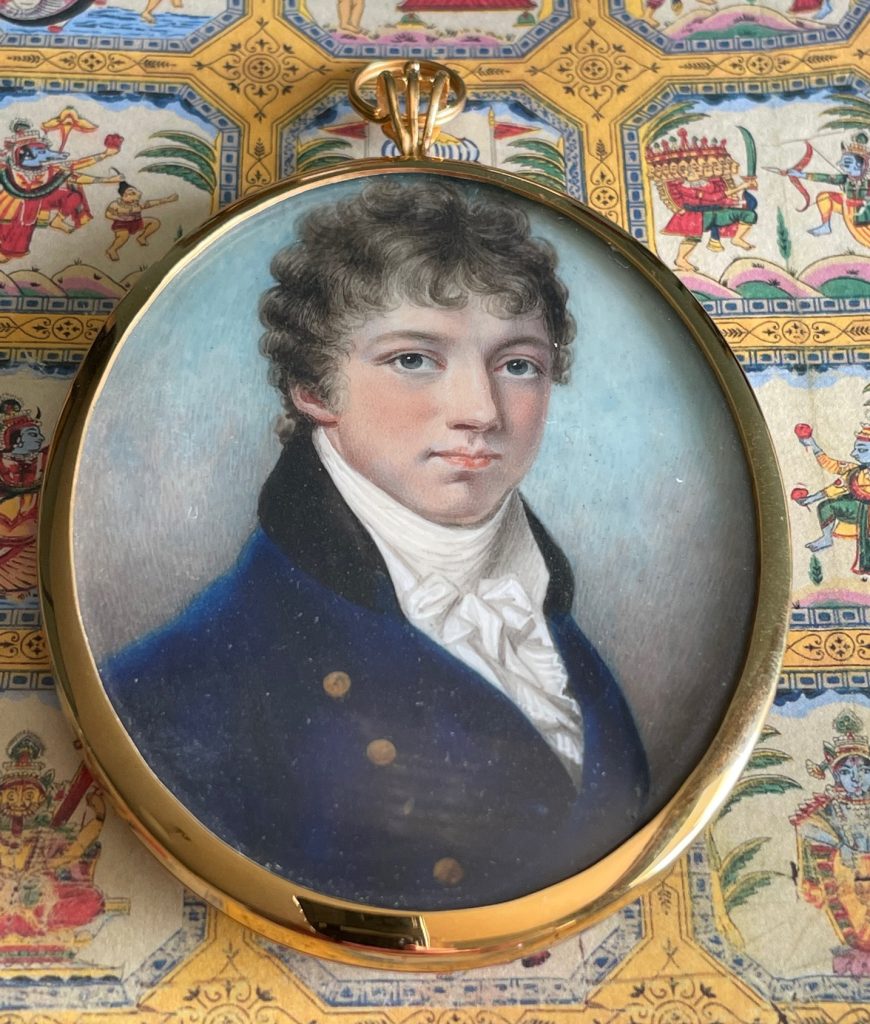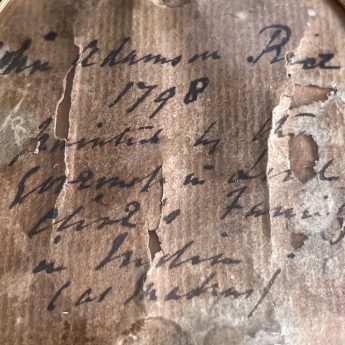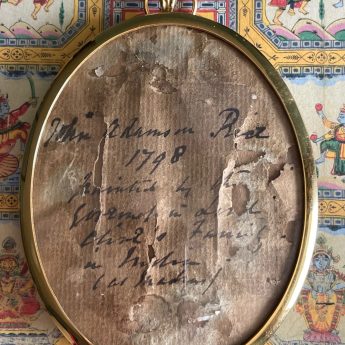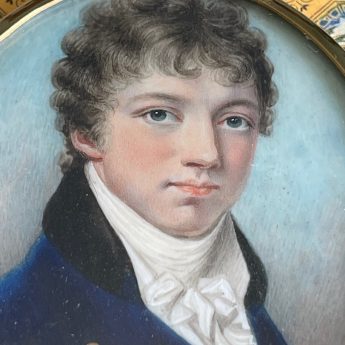
John Adamson Rice
Portrait miniatures, silhouettes, portraits & an omnium-gatherum of historical interest & character.
Enquiries and orders
John Adamson Rice
Anna Tonelli, 1798
Sold
Fashionably dressed in a smart blue coat with brass buttons and a velvet collar over a white waistcoat and neatly tied stock, John Adamson Rice is depicted here at the age of twenty. The portrait may have been painted to mark his arrival in India and intended as a keepsake for his mother back in England. Given that John was to die the following year, this would have become a most precious family memorial. The portrait is inscribed reverse with the sitter’s name and a cryptic clue for the identity of the artist –
John Adamson Rice / 1798 / painted by the /
Governess in Lord Clive’s family / in India /
(at Madras)
John Adamson Rice was born in Dover in March 1778, the second son of Henry Rice and his wife Sarah Samson. Born in Whitechapel, Sarah came from a sea-faring family: her father and two uncles were captains of East India Company ships. The family was also involved in the manufacture of china porcelain copies now known as Samsonware. Henry Rice was born in Wales and went to sea at the age of sixteen. His career prospered as he soon became Captain of the Dutton with a part share in the ship.
Henry apparently won a 10 guinea bet with his shipmates when he married Sarah in January 1776. An heiress, her marriage dowry was a cool £30,000 (over 6 million in today’s money). The couple had four children but their only daughter did not survive infancy. John Adamson followed his father into the East India Company but his time there turned out to be brief as he sadly died in 1799 aged just 21.
John’s older brother, Henry Rice, joined the Church and married Jemima Lucy Lefroy, a close friend of Jane Austen. Meanwhile his younger brother, Edward Royd Rice, went on to marry Jane Austen’s niece Elizabeth Knight. In her correspondence, Jane Austen described the boys’ mother Sarah as “a disagreeable and hard-hearted woman”. Sarah was, however, an excellent business woman who, when left a widow in 1797, took over the running of her husband’s share in a bank. She amassed a sizeable fortune despite having to regularly bail out her profligate elder son.
In excellent condition, the portrait is housed in a later gold frame that is also glazed reverse to show the cryptic inscription. It is handsomely set in a red leather folding case with an easel stand as commissioned by Lavender Antiques.
Edward Clive, the eldest son of ‘Clive of India’ was a British politician and member of Parliament. He was appointed Governor of Madras in 1798. By then he had four young children so when the family settled in Madras they were accompanied by Italian-born Anna Tonelli (ca1763-1846) who was charged with teaching the Clive children drawing. Already an accomplished portrait artist, Tonelli spent three years in Madras taking portraits in both miniature and in pastel, charging 30 guineas for a portrait miniature. A small group of her portraits of the Clive family can be seen at Powis Castle but examples of her portrait miniatures are like hens’ teeth.
APHA Registration: E4WDK613
Item Ref. 7457
Size: framed, 85 x 68mm
Provenance: A descendant of Jane Austen ; Christie's July 1991 ; David Lavender ; Private UK collection


